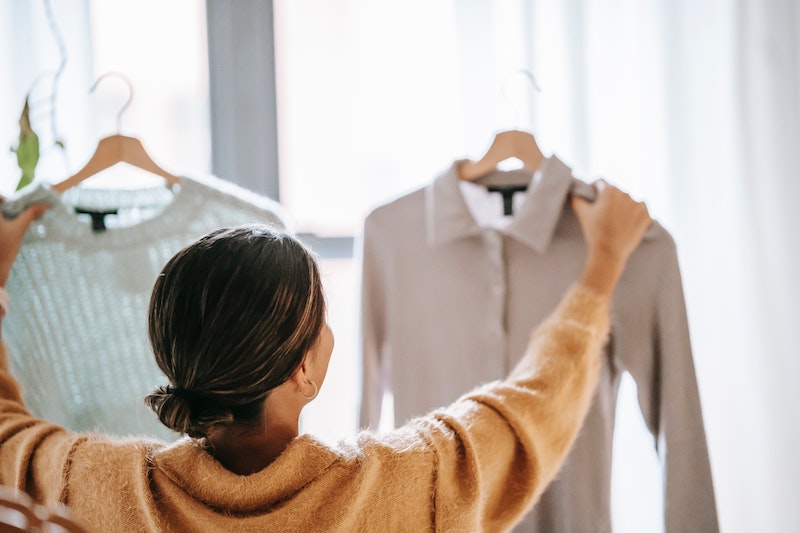
Over 90% of all retail sales are still made in-store. Even in 2018, retail stores still significantly outperform their e-commerce counterparts in conversion rates.
When someone walks into a shop they are 400% more likely to buy something than when they arrive on a website. But brands like ASOS, Nordstrom and Sephora are showing how retailers can bridge the gap by bringing what used to be traditionally offline experiences into the new e-commerce landscape.
1) Offer personal styling assistants to match customers with the products that are most relevant to their tastes
One of the best-known retailers offering a personal styling service is Trunk Club — a subsidiary of Nordstrom. At Trunk Club, each “style box” is manually curated by paid employees and shipped out to customers individually. While this is a great alternative for busy people who don’t want to pick out clothes for themselves, this is too logistically complex, labor-intensive and expensive an option for most retailers.
Neiman Marcus has taken a different approach to personal styling. Users of their app simply take a picture of a product they like and their AI-powered image recognition will find in-stock visually similar items from their catalog. While this isn’t personally curated like the Trunk Shop’s service, it helps consumers find the styles they’ll love within seconds using only their phone. Urban Outfitters, Target and Wayfair are three other brands who have opted for this automated alternative.
2) Give customers greater confidence when shopping online by enabling them to “try” products in real time
To make buying products you haven’t tried or seen seem like less of a risk, some retailers are now leveraging image recognition software to help customers visualize how something will look using only their smartphone.
Sephora’s Visual Artist feature provides users with a visualization of how a specific product will look, requiring a photo of their face. Here consumers can try several types of makeup at once with minimal effort — essentially removing fears around buying beauty products online.
In furniture, IKEA and Lowe are both using AR apps to help their customers visualize how a specific product will look in a given space. By seeing true-to-life representations of a product’s dimensions, fabric and texture, consumers can better determine whether a sofa, chair or light fixture will fit in their room without having to buy or install anything.
Liberal return policies offer another way to ease doubts and encourage purchasing. Retailers like Nordstrom leverage permissive return policies to boost sales. According to a 2015 UPS Study, 88% of online shoppers review retailers’ return policies. By creating a customer-centric return policy, you can successfully overcome common fears and concerns online consumers might have about buying a product they haven’t tried on before.
3) Convert more customers with targeted, relevant product recommendations
35% of Amazon’s revenue is generated by its recommendation engine — McKinsey & Co
But there are risks to promoting content and making product recommendations: three quarters of customers find it frustrating when websites suggest products that aren’t relevant to their interests. However, retailers offering personalized shopping recommendations influence 92% of online shoppers to buy. In other words, spending the time to get product recommendations right — by making them relevant, timely and personal — represents a massive revenue opportunity.
Most sites’ recommendation engines use other users’ shopping patterns to generate listings of products that “You might also like” or “Customers also bought.” But it’s possible to go further and make recommendations even more highly targeted and personal. Rather than basing recommendations on the behavior of broader customer segments, retailers can look at each individual’s customer journey and make product recommendations based on the qualities of the items they’ve engaged with, added to their cart or purchased.
Cart abandonment is a thorn in most e-commerce managers’ side. But retargeting with hyper-personalized recommendations presents a viable solution. If a customer added two dresses to their cart and left them there, why not send a win-back email recommending the most visually similar dresses in the catalog? Why not show them an ad for the very same dresses? At a time where consumers get more promotional emails and content than ever before, relevance and personalization are key.
4) Use virtual shopping assistants and chatbots to assist customers online
Instead of guessing that online shoppers will know where to find what they’re looking for, why not offer them assistance just like a store clerk would? Retail giants like eBay and Sephora have started using chatbots to better understand customer intent to help them buy the items that are right for them. Beerud Sheth, CEO of Gupshup, said “A chatbot can dramatically increase sales for a brand like Sephora that has a wide variety of SKUs. Chatbots act like the in-store sales assistant, always available, instant, highly knowledgeable.”
Smaller retailers don’t need to spend millions developing sophisticated in-house chatbots to compete; conversion optimization tools and platforms which offer real-time assistance to both online consumers and retailers have never been more accessible.
5) Give customers a way to engage with your entire catalog without limiting their options
One of the advantages online retailers have is being able to sell as many products as they want without having to worry about whether they have space to present them all. This doesn’t come without its downsides. For sites with thousands of products, it’s impossible for customers to look at everything — forcing them to use filters and keywords to engage with a smaller selection of items.
But what if the item you would have bought was skipped over by the filter you used? The ability to browse a product range cross categories enables customers to hone in on the things they like while still being open to inspiration, to something different. Last summer, ASOS launched a new search feature to help customers do exactly this. The result is an engaging, high-converting alternative to traditional filters and keyword search.
6) Build out Shop The Look collections
Just as a clothing store might have a “vintage” rack or a furniture shop might curate their range by room or era, websites can build out collections of their own. Customers engage with curated collections not only to be inspired by different looks and styles, but also because they want to be able to easily buy the items making up these collections.
“Shop the Look” collections increases the chance that consumers will buy entire outfits rather than single item and in the process, increase average order values while providing cross-category inspiration for casual browsers.



.png)